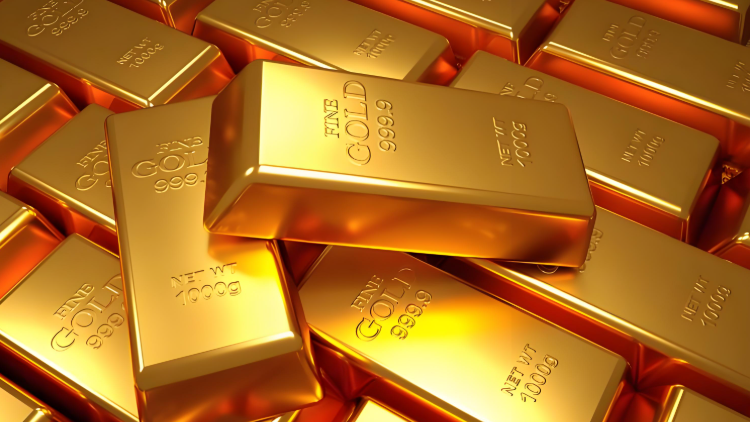Gold Hits $2,807 Mark
Advertisements
Despite soaring gold prices reaching unprecedented highs,the demand for gold and silver exchange-traded funds (ETFs) remains surprisingly tepid.This suggests a substantial potential within the market as traders maintain a cautious watch on the upcoming Personal Consumption Expenditures (PCE) index,a vital economic indicator that underscores the Federal Reserve's monetary policy stance.
On Friday,the spot price of gold peaked at $2807,marking yet another historical high.This upward surge comes in the wake of renewed threats of tariffs from the U.S.government,prompting investors to flock to safe-haven assets amidst rising uncertainty.
Nitesh Shah,a commodity strategist at WisdomTree,asserts that this bullish momentum is likely to persist as long as market uncertainties remain.Many of these uncertainties center around the opaque nature of tariff implementations and their implications on trade relations.
In a report by Paul Williams,managing director of Solomon Global,he elaborates that the rise in gold prices cannot solely be attributed to controversial governmental policies.He underscores the lingering high levels of geopolitical uncertainty that continue to shape market dynamics.
Williams articulates,“The behavior of gold illustrates the complex interplay of global factors affecting today’s economy.This is not merely a transient spike; rather,it reflects the entrenched instability in the global economic landscape,which is deeply influenced by shifting geopolitical structures.As the world order becomes increasingly volatile,gold stands out as a compelling choice for risk hedging and wealth preservation.”
Beyond the realm of trade tensions and geopolitical strife,the consistent purchasing activity by central banks remains a crucial pillar supporting gold prices.Carsten Menke,an analyst at Julius Baer,conveys that “we perceive central bank purchases as the most robust structural force in the gold market.”
As traders eagerly await the release of the PCE index,which serves as the Federal Reserve’s preferred gauge of inflation,they anticipate insights that could guide future policy decisions.Earlier in the week,Fed Chair Jerome Powell reiterated that decisions regarding interest rates would be contingent on the evolving state of inflation and the labor market.
Simultaneously,the recent release of U.S.GDP figures disclosed an annualized growth rate of merely 2.3% for the fourth quarter,falling short of expectations.Yet,the increase in consumer spending—growing at the fastest pace in nearly two years—suggests that inflationary pressures may continue to mount.
As investors adjust their positions ahead of significant economic data releases,including the PCE inflation report,personal spending,and employment cost indexes,U.S.treasury yields experienced a slight uptick on Friday.
In a highly anticipated meeting earlier this year,the Federal Reserve opted to maintain its key interest rates in the range of 4.25% to 4.50% following careful deliberation.The announcement swiftly attracted significant attention and sparked discussions within global financial markets.Presently,the Fed is grappling with political pressures to lower interest rates,with various stakeholders advocating for rate cuts aimed at stimulating economic growth and alleviating market tensions.However,the Fed stands firm,focusing on inflation risks as the primary concern.Chairman Powell emphasized in a post-meeting press conference that the Fed seeks to witness “genuine progress on inflation or signs of weakness in the labor market” prior to contemplating adjustments to current rate policies. His statement clearly reflects the Fed's rigorous approach in formulating monetary policy and its steadfast commitment to long-term economic stability,resisting the temptation to cater to short-term political pressures.
His statement clearly reflects the Fed's rigorous approach in formulating monetary policy and its steadfast commitment to long-term economic stability,resisting the temptation to cater to short-term political pressures.
If inflation is not effectively managed,it poses a severe threat to sustained economic health,compelling the Fed to maintain vigilance in monitoring economic data trends.Against this backdrop of ongoing policy uncertainty,gold retains its robust position as a reliable hedging tool.
With the looming considerations of trade tensions,central bank buying activities,and inflation concerns,analysts foresee further upward potential for gold prices.Ricardo Evangelista,a senior analyst at ActivTrades,notes that “if high inflation coupled with sluggish growth becomes a reality,the $3000 per ounce price level would increasingly become attainable.”
MarketGauge's chief strategist Schneider recently echoed this sentiment,asserting that if gold prices breach the $2800 per ounce mark decisively,reaching $3000 would become relatively uncomplicated.
While gold has touched record highs,the lackluster demand for gold and silver ETFs underscores the existence of significant market potential,as identified by Robert Minter,head of ETF strategies at abdn.Minter believes that it is merely a matter of time before investors gravitate towards gold as a safe-haven asset,given the current market climate,which he likens to an “unpredictable dance floor” where the next move is obscured.
Nevertheless,elevated prices have dampened physical gold demand,particularly in markets like India,where buyers are holding back in anticipation of the federal budget results expected on February 1.Although this may pose short-term resistance,the overall sentiment remains bullish,emphasizing the persistent allure of gold as a hedge against uncertainty.
Leave a Comment